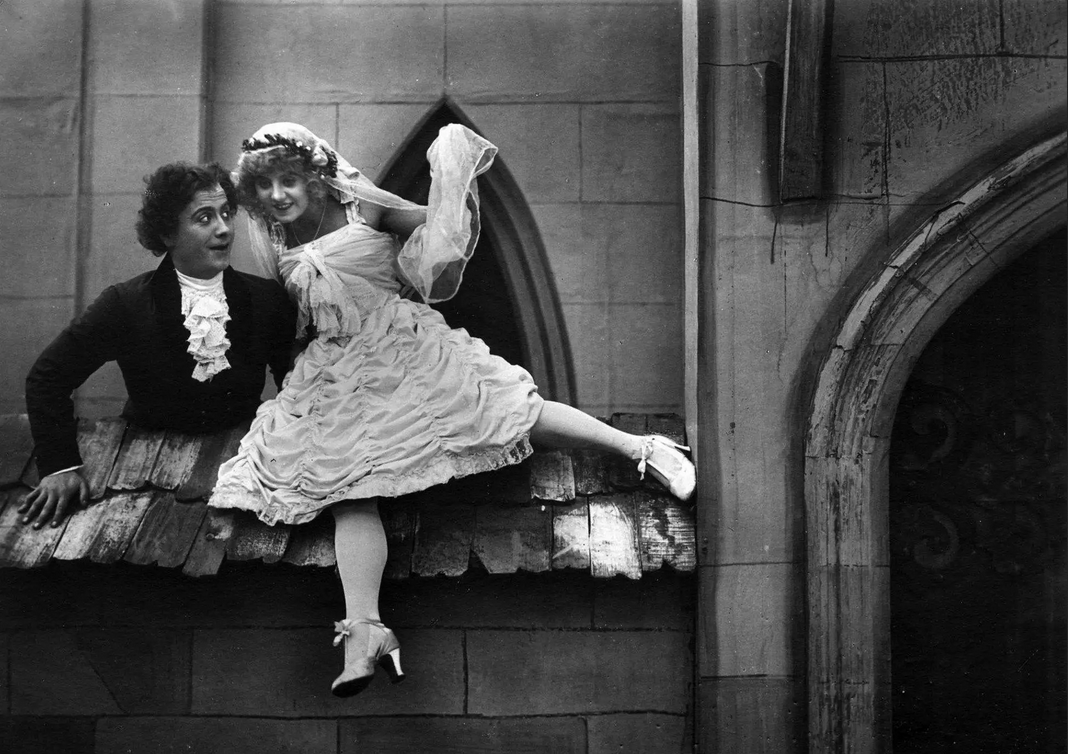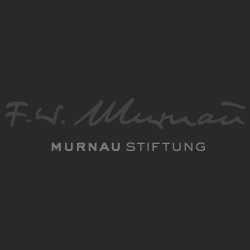The Doll
The Doll
Germany 1919, 68 min. | HD-s/w-restored version
While the everyday life of the German population was more than gloomy shortly after the end of the First World War, the light-footed fairy tale THE PUPPET by comedy star Ernst Lubitsch was made. The wealthy Baron de Chanterelle wants to marry off his nephew. But as the young man knows little about women, he takes refuge in a monastery. When the monks find out about the dowry, they don’t offer Lancelot the dowry. The comedy, based on an operetta by A. E. Millner, gives no hint of its period of origin, precisely because Lubitsch decided to tell a story detached from place and time. In addition, he emphasises the artificial through the type of acting, sets and costumes. In this way, THE PUPPET creates a completely new, cinematic reality. Even 100 years after its premiere on 5 December 1919 at the Ufa-Palast am Zoo in Berlin, DIE PUPPE remains original and timeless.
The young Lancelot is an extremely shy lad and has not the slightest desire to marry. He is all the more shocked when his uncle, the Baron de Chanterelle, presents him with no less than 40 virgins from which Lancelot is to choose one. 40 virgins - that's clearly too many for poor Lancelot, and so he flees to a guaranteed womanless place: the monastery.
When the monks learn of the dowry that Lancelot would collect from his uncle if he married, they persuade him to marry for appearances - a female wind-up doll. Lancelot agrees, the monks look forward to the dowry, and everything seems to be in perfect order - until the doll breaks shortly before the wedding ceremony. Now a replacement has to be found very quickly. Ossi, the lively daughter of the doll maker Hilarius, agrees to play the ungrateful doll role until her father has delivered a replacement. Lancelot suspects nothing of the masquerade until the "doll" finally enlightens him and Lancelot falls in love with a "real" girl after all ...
"The Doll" (1919) by Ernst Lubitsch is first and foremost good and skilful entertainment, at the edge of which experimental elements also appear (such as the duplication of the image). I therefore looked for aids in the music that directly support the film - the aim was to emphasise its good mood and its numerous ironic details, and ultimately to make the silent film easier to read. The ten instruments use the tools of the new music trade such as microtones or timbre effects, as well as loops, tonal elements and semi-quotations. For example, the music for the ball is a mosaic of bizarre noises and fragments of a classical minuet after all. And there is also a real quote from Tchaikovsky's "Eugene Onegin", albeit in ironic refraction, as the bassoon is used in its highest register.
Mosaic and hoquetus techniques were my key compositional strategies. I most enjoyed writing music for car chases. My favourite part was the boy, the puppet-maker's apprentice. My favourite scene is the fight in the kitchen, where our percussionists had the fun of portraying the shattering of the many plates.
(Source: Breitkopf & Härtel publishing house)
Der Puppenkavalier
Film music for ensemble by Martin Smolka (2010) to the silent film "Die Puppe" by Ernst Lubitsch (1919)
Instrumentation:
1 fl(picc).0.1 cla(bcl).1 bsn - 0.1 tpt.0.0 - 2 perc, 1 el.guit, 1 acc - 1 vl, 1 db
First premiere: Nuremberg, 10 April 2010
Martin Smolka (*1959 in Prague) studied composition at the Prague Academy of Arts and privately with Marek Kopelent. In 1983 Smolka co-founded the Agon Ensemble, which focuses on the musical avant-garde of the present and past.
avant-garde of the present and past. As artistic director and as a performer (prepared piano), Smolka remained associated with the Agon Ensemble until 1998. In 1996 he co-authored the book and CD publication Grafické partitury a koncepty with Petr Kofron. Smolka lives in Prague. However, most of his works are performed outside the Czech Republic. Among his clients are well-known European ensembles and festivals. In Prague, Smolka is best known for his opera Nagano, for which he received the Alfréd Radok Prize in 2004. Since 2003 Smolka has taught composition at the Janácek Academy of Music in Brno. In 2012 Smolka received the composition prize of theFondation Prince Pierre de Monaco.
Oswalda was born the daughter of a high school teacher in Niederschönhausen (a district of Berlin since 1920). Her father died when she was four years old, so she grew up with her deaf-mute mother. After dance lessons with Eva Peter as a prima ballerina, she went to work as a chorus dancer at a Berlin theatre, where she was discovered in 1916 by Hanns Kräly, who recommended her to Ernst Lubitsch. Between 1916 and 1920 she made about a dozen films almost exclusively with Lubitsch, the majority of which are now considered lost. Other directors also knew how to use her talent. Excited, cocky and shrill, she became a darling of the public, which is why she was soon referred to as "the German Mary Pickford". Along with Henny Porten and Asta Nielsen, she was "one of the first great female stars of the German film."
In 1921, Oswalda founded her own film company, Ossi-Oswalda-Film, which was headed by her then husband Gustav Freiherr von Kóczián-Miskolczy (father of actress Johanna von Koczian in a later marriage). Director of the movies she produced was her film partner Victor Janson. From 1925 she was under contract with the Ufa and appeared in about 50 silent movies till 1930.
The talkies meant the end of her film career. In 1943 she wrote the screenplay for the film The Fourteenth at the Table (Čtrnáctý u stolu). After that it became quiet around the former silent film diva. In the last years of her life, the once celebrated star fell into oblivion. She died completely impoverished in Prague in 1947. She was buried in the Olšany cemetery in Prague.
(Source: Wikipedia)
Credits
- Direction:
Ernst Lubitsch - Screenplay:
Hanns Kräly, Ernst Lubitsch - Camera:
Theodor Sparkuhl - Actors:
Ossi Oswalda (Ossi Hilarius), Hermann Thimig (Lancelot), Victor Janson (Hilarius), Jakob Tiedke (Prior), Gerhard Ritterband (Apprentice at Hilarius), Ernst Lubitsch (Director of the entry scene) u.a. - Film restoration (2009):
Friedrich-Wilhelm-Murnau-Foundation - Score music (2010):
Martin Smolka (Commissioned by ZDF in collaboration with Arte) - Editorial:
Nina Goslar, ZDF - Production:
Thomas Schmölz, 2eleven music film




